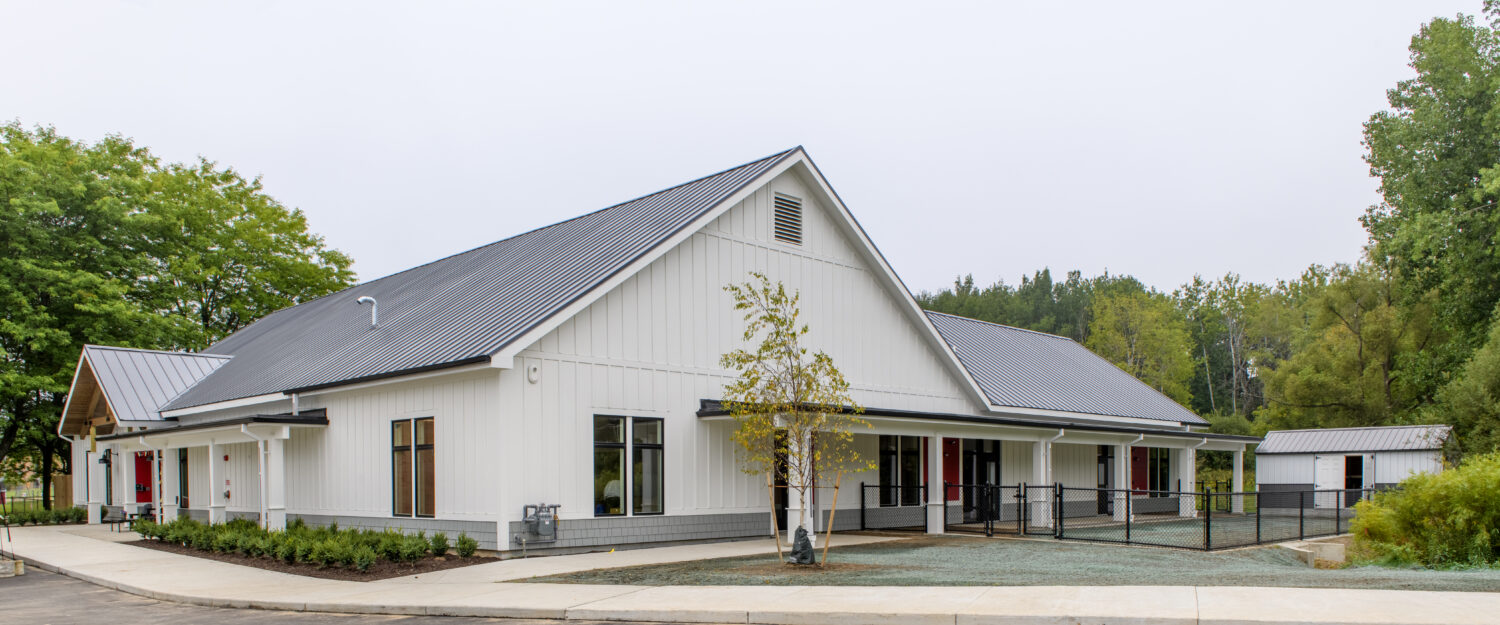Ferris State University
Early Learning Center
Project Details
Location
Big Rapids, MI 49307
Services Utilized
Green Building Certifications
Energy Modeling
Project Size
5,000 Gross Square Feet
Project Achievements
LEED for New Construction v4 Certified
The Challenge
Ferris State University set out to create an Early Learning center that would serve as a model of sustainable, child-focused design—supporting early learners, student-teachers, and families alike. As a purpose-built facility, the project wanted to prioritize indoor environmental quality, material health, and energy and water efficiency. The university sought out LEED certification to align with its broader sustainability values as an institution. Balancing the needs of infants through preschoolers, early childhood education students, and working families—including those supported through CCAMPIS grants—meant the building had to be high-performing, safe, and inclusive without compromising function or comfort.
A Safe Place to
Be and Build
For Ferris State University, creating the Early Learning Center was about more than earning certification—it was about protecting the health of the youngest learners and those who care for them. Every material chosen for the space—from flooring and adhesives to insulation and wood products—was carefully vetted for safety, transparency, and low chemical emissions. In a setting where infants crawl, preschoolers explore, and future educators learn by example, the quality of air and materials matters deeply. By prioritizing low-emitting, non-toxic finishes, the Center ensures that every surface is as safe as it is durable, supporting curiosity without compromise. The result is more than a high-performing building—it’s a quiet promise to families, teachers, and students: that this is a safe place to be, and a strong foundation to build from.
Our Solution
Through a collaborative sustainability consulting process, the project achieved LEED certification by integrating health-focused and environmentally responsible design strategies. With the main occupants being young children, the Early Learning Center sought out and earned all available points for low-emitting materials—including paints, adhesives, flooring, ceilings, and insulation—supporting healthier indoor environments for a vulnerable population. Enhanced indoor air quality strategies, carbon dioxide monitoring, and a construction-phase Indoor Air Quality Management Plan ensured pollutant exposure was minimized from the earliest phases of the build.
To meet energy goals, the team modeled and implemented a system design that delivered a projected 33.3% energy cost savings over baseline performance, backed by enhanced commissioning to verify system performance. The building also reduced indoor water use by 33% and required no outdoor irrigation, contributing to both indoor and outdoor water efficiency.
Material selection was guided by transparency and sustainability—earning points for product-specific Environmental Product Declarations (EPDs), responsible sourcing of raw materials, and optimization of material ingredients. These efforts supported both LEED goals and the university’s aim to provide a clean, low-toxicity environment for its youngest learners.
The building now stands as a practical, sustainable, and equitable space for children, families, and educators. It exemplifies how thoughtful, health-driven design can meet the needs of multiple user groups while modeling environmental responsibility in early childhood education.
"Catalyst Partners attention to detail and ability to be effective communicators has been instrumental in Ferris State University receiving LEED certification for our last two capital projects. Their collaborative approach with our design and construction management partners helps streamline the LEED documentation process and is the reason Catalyst Partners is Ferris State University's "go-to" consultant in terms of managing the LEED certification process."
Associate Vice President of Facilities Joe Haupt
Project Achievements
33.3%
Calculated Energy Cost Reduction
46%
Open Space
15%
Recycled Material Use
100%
Outdoor Water Use Reduction
33%
Indoor Water Use Reduction
100%
Lighting Controls Provided to Occupants
Building Certifications
LEED for New Construction v4 Certification

